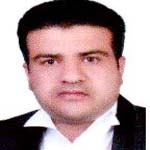An Improved Approach for Spectral-spatial Classification of Hyperspectral Images using Weighted Genetic and Neural Network Algorithms
Hyperspectral remote sensing technology has seen significant progress in the last two decades. This progress is very evident in the design and construction of sensors as well as in the development and implementation of data processing methods. Today, most researches in the field of hyperspectral remote sensing technology emphasize on the classification of these images. Classification methods of hyperspectral images are divided into two categories: spectral or pixel-based classification and spectral-spatial or object-based classification. In this research, the spectral-spatial classification of hyperspectral image in an urban environment has been discussed. Since an urban environment has complex features in terms of elements, hyperspectral data effectively help to identify, extract and produce a map of their constituent elements. Identification of different materials in urban environments is very important in various applications, such as mobile phone communications, virtual reality, architecture and urban modeling, and planning and management of cities.
In this research, two hyperspectral images of Pavia and Berlin, which are part of the standard images in the field of hyperspectral remote sensing, were used to evaluate the proposed method. In the proposed method, the dimensions of the hyperspectral image are first reduced with the help of the PCA algorithm, Then, ten spatial features mean, standard deviation, degree of variation, homogeneity, correlation, dissimilarity, energy, entropy, wavelet transform and Gabor filter are extracted from the reduced bands. Then, the weighted genetic algorithm is applied to the obtained spectral and spatial features and finally the obtained features are classified with the help of MLP algorithm.
In the tests conducted for the genetic algorithm, chromosomes have genes equal to the number of spectral and spatial features. In these tests, the crossover and mutation rates were considered as 0.5 and 0.05, respectively. Also, to create a balance between the two parameters of accuracy and calculation time, the initial population size was 30 and the maximum number of repetitions for stopping was 100. However, in practice for both hyperspectral images, since the active condition is used to stop the algorithm, the iteration process does not reach step 100 and before that the algorithm reaches a stable state and stops. The MLP classification algorithm was implemented with 3 hidden layers consisting of 5, 6 and 8 neurons and evaluated with 500 iterations. The proposed classification method was compared with SVM, MLP and MSF algorithms. In both hyperspectral images, the map obtained by the proposed method includes single nova regions in comparison with other algorithms. In the Pavia image, the proposed method has caused an increase of 13, 7, and 6 percent, and in the Berlin image, it has caused an increase of 9, 6, and 5 percent, in the Kappa coefficient parameter, respectively, compared to the SVM, MLP, and MSF algorithms. The reason for this increase in the accuracy of the proposed method can be the use of nearest neighbor information and two stages of dimensionality reduction.
In this research, a new method for spectral-spatial classification of hyperspectral images was introduced. In the proposed method, the dimensions of the hyperspectral image were first reduced and ten features were extracted as the nearest neighborhood information from the reduced bands. Then, a weighted genetic algorithm was applied to the obtained features to reduce the dependence between them. Genetic algorithm is one of the most efficient and effective methods in reducing the dimensionality of hyperspectral images. In the binary genetic algorithm, each chromosome has values of one and zero, while in the weighted genetic algorithm, the weight values are between zero and one. The proposed method was implemented on two hyperspectral images of Pavia and Berlin, and the quantitative and qualitative experiments show the superiority of the proposed method. The lower accuracy of the results in the Berlin image may be due to the complexity of this image compared to the Pavia image.
-
Assessing the effect of climate change on agricultural drought by using of SMDI index in different Irrigation levels
Fatemeh Hajiabadi, Farzad Hassanpour, Mostafa Yaghoobzadeh *, Hossein Hammami
Journal of New Approaches in Water Engineering and Environment, Spring-Summer 2025 -
Assessment of Climate Change Impact on Wheat Grain Yield and Biomass Under Two Levels of Salinity and Drought Stress
Fatemeh Hajiabadi, Farzad Hassanpour, Mostafa Yaghoobzadeh *, Hossein Hammami
Journal of Water Research in Agriculture, Spring 2025 -
Building Detection with Special Roofing in Hyperspectral Images using Marker-based Hierarchical Algorithm
*
Iranian Journal of Remote Sencing & GIS, -
Building Detection with Special Roofing in Urban Areas using Hyperspectral Remote Sensing Technology
D. Akbari *, M. Akbari
Journal of Remote Sensing and Geoinformation Research, -
Assessing the Vulnerability of Power Distribution Network to Natural Flood Hazards: A Case Study of the Behdan Watershed in Birjand County
*, Javad Mikaniki, Morteza Dehghani, Hasan Sabeghi
Journal of Geography and Environmental Hazards, -
Detecting oil slicks using SAR radar images and the Google Earth Engine platform
ALI KOUROSH NIYA *, ALI ASHRAFI
Nivar,



